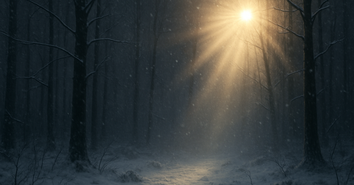What Is the Book of Giants and Is it Biblical?

What comes to your mind when you think of giants? I imagine a being unusually large with a distorted face and evil in their eyes. Giants are considered mystical creatures that are the figments of one’s imagination. I would say that most of us don’t believe such things existed; or did they?
The Book of Giants is one of many literary works that claim giants walked this earth before Noah built the ark. It contains connections to biblical people such as Enoch. This knowledge piqued my interest and questioned what I thought to be true.
So, what is the Book of Giants and does it have biblical truth? Why is it not included in our holy canon?
Without further delay, let’s find out!
What Is the Book of Giants?
The Book of Giants is a pseudepigraphal book written in antediluvian time. In plain English, it is a book not included in the canon and it was written before the Flood. It has a similar storyline to another pseudepigraphal book, 1 Enoch.
Scholars recognize this book as a true piece of ancient literature. Fragments of The Book of Giants were found at Qumran in 1947 among the Dead Sea Scrolls. There is no doubt that this book was written and shared pre-flood and after. What is hard to piece together is the storyline because we only have fragments.
What Is the Book of Giants About?
As stated before, the storyline of this book is somewhat difficult to put together because we don’t have the full version. Scholars have used the fragments found with the Dead Sea Scrolls to come up with a suggested summary.
What scholars have learned is that there are two versions of The Book of Giants. Along with the Dead Sea Scroll version is the Manichean version.
Dead Sea Scroll Version
This version was written in Aramaic and is an expansion of the story written in 1 Enoch. In this version, God sends the “Watchers” to earth with the purpose of nurturing humanity. Because the Watchers were angelic beings from heaven, they were to teach humans how to carry out proper rituals and have ethical conduct.
The Watchers stray from their intended purpose and begin to seduce and be seduced by mortal women. When the Watchers lie with mortal women, they create offspring that looks different than other human offspring. These offspring are called giants and they spend their lives causing havoc upon the earth. The prophet Enoch tries unsuccessfully to intercede on the behalf of the giants and God sends the flood.
The Manichean Version
The founder of the Manichean religion was an apostle named Mani. He is given credit for writing The Book of Giants. Mani was raised in southern Mesopotamia in a Jewish- Christian sect called the Elkesaites. When he was twelve, Mani began having visions. His visions would get him excommunicated and so he founds his own religion.
In Mani’s version, we find a similar story to that of the Dead Sea Scrolls version. It was written in Syriac, an eastern Aramaic dialect and tells the story of demons escaping the heavenly realm to live on Earth. While on Earth, the demons cause chaos and destruction. The entirety of this version tells of the battles between light and darkness with forces being led by the archangels Michael, Gabriel, Raphael, and Uriel.
Is the Book of Giants Part of the Bible?
The Book of Giants is not included in the Bible. When the Bible as we know it today was coming together, a set of requirements for canonization was developed. If a book did not meet all the requirements, it would not be included. Those requirements were the following.
- Author had to be an apostle or in close relationship to an apostle
- Accepted by the body of Christ at large
- Contain consistent doctrine and orthodox teaching
- Have evidence of high moral and spiritual value
The scholars and theologians gathered to complete the task of creating a canon did not believe the Book of Giants met these requirements and therefore should not be included.
Even though the Book of Giants is not in our Bibles today, we can find some connections from Scripture to this book. In Genesis 6:4 it says “The Nephilim were on the earth in those days – and also afterward – when the sons of God went to the daughters of men and had children by them…. Further along in the book of Numbers in chapter 13 we read verse 33. It says “We saw the Nephilim there. We seemed like grasshoppers in our own eyes, and we looked the same to them.”
Those verses tell us that the Jewish culture believed what the Book of Giants was speaking of. Nephilim was the name given to the offspring of the heavenly beings and mortal women. They were large and people feared them. Because of their actions, God had to send a flood to wipe out the world.
We can’t know for sure what the people called Nephilim looked like. We can’t know their specific behaviors. The Book of Giants was written at a time in history when polytheism and mythology were prominent belief systems. There was a god for everything, and people were very superstitious. Jewish and Mesopotamian culture allowed this story to have shreds of truth that would lead the people to believe the story.
The Book of Giants is not considered an inspired or inerrant work of God. It is fantastical story linked to another apocryphal book which predates the Book of Giants. It is one of many explanations for the flood in Noah’s time. Today, we call this historical fiction. Humans are notorious for wanting an answer to every question. We are a curious people. The Book of Giants leaves a door open for our curiosities.
Scholars and theologians agree that the Book of Giants should not be included in the Bible. They do think this story is one that can tell us a lot about the cultures of that time. The Book of Giants has merit historically.
What Have We Learned?
After much research regarding the Book of Giants, we have learned that it is an attempt to share what life was like before God sent the flood. It tells us that there were Jewish traditions intermingled with mythological creatures and polytheistic civilizations. The story was a way to explain the events that led to God sending a flood to wipe out humanity.
The Book of Giants is not included in the canon for the simple reason that it not an inspired word from God. This doesn’t mean we throw it away. We should view this piece of literature as a source of learning what life was like during the time it was written.
Because we are curious people, we feel we must question things we don’t understand. The important lesson to learn from these apocryphal books is that if God wanted us to know something, He would tell us. Sometimes it is best that we don’t know all the answers. All the time, it is best to lean on the Lord and be confident that if there is an answer you need to know, He will provide it.
Photo Credit: ©GettyImages/kot63

Originally published October 28, 2021.







